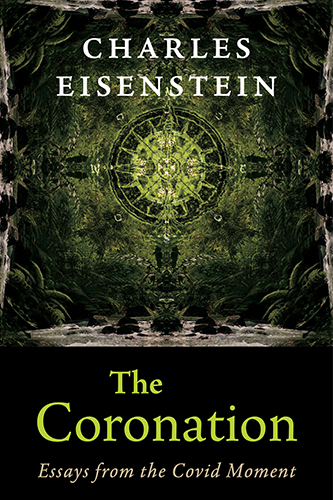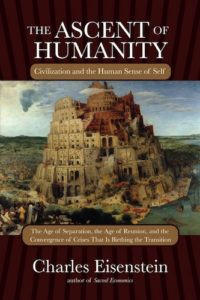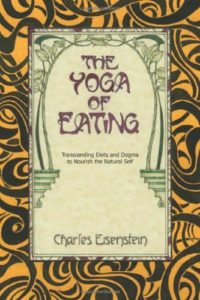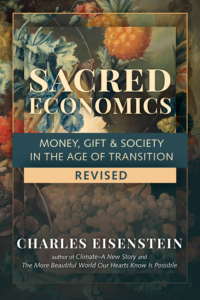The Ascent of Humanity
Chapters
Chapter 7: The Age of Reunion
The Medicine of Interbeingness
I have been wrong. The germ is nothing. The “terrain” is everything.
— Louis Pasteur
In the opening chapter, “The Triumph of Technology,” I described how the triumphs of modern medicine in the 1940s and 1950s in overcoming most infectious disease were never followed by victories over cancer, arthritis, heart disease, and the host of new diseases that have arisen since. Despite vastly increased knowledge of molecular biology, despite the pretensions of nanomedicine and gene therapy, we have made little headway against today’s up-and-coming diseases. Certainly there have been no miracle cures, no “magic bullet” drugs like the antibiotics and vaccines of an earlier era.
Instead what we have is an ever-intensifying regime of control, based on killing germs, sterilizing the environment, cutting out organs, replacing hormones, and dictating body chemistry. Like any technological fix, this regime of control comes at a higher and higher price; it is sustained only with increasing effort even as it becomes more and more fragile.
In Chapter Five’s “The War on Germs” I asked, “What is the alternative to killing the germs?” What is the alternative to control? Is it to let nature take its course? Yes, it is. However, “let nature take its course” can mean something very different than to just let the body fall apart. Steeped as we are in the ideology of separation, we see nature as a force toward chaos, fundamentally unfriendly. In a survival-of-the-fittest mentality, we are safest, healthiest, and most comfortable when we overcome our competitors—by definition the rest of life—and keep life under control.
New paradigms of biology change all that. The primacy of symbiosis in nature, the genetic fluidity that unifies all life, and the idea of a purpose and beauty written into nature and not accidental to it, all lead to a very different conception of health and healing. No longer is health maintenance a matter of resisting the course of nature; instead, resisting the course of nature generates ill health.
It is almost a cliché that wholeness is a synonym for health, and to heal means to become whole. Throughout this book I have argued that the maladies of our civilization stem ultimately from our misconception of self. Psychologically and biologically, we see ourselves as much less than what we are. In other words, we have defined ourselves as less than our full wholeness. Or, you could say, we have defined ourselves as unhealthy. Illness is built in to our self-definition.
The New Biology understands that no being is separate and distinct from the rest of life; that beyond interdependency, all share an “inter-beingness” that admits to no discrete, self-contained unit of life. Cells are alive, organs are alive, organisms are alive, soil is alive, ecosystems are alive, the planet is alive. . . maybe even the cosmos is alive, and each not only depends but also exists only in relation to the others. By warring against germs with our medicine, and by warring against nature in general with our technology, we thereby war against parts of ourselves.
This war against ourselves finds a dramatic enactment in our own bodies. Almost all the new epidemic diseases of the post-modern era involve a dysfunction of the immune system. The healthy functioning of the immune system, at its most fundamental level, depends on the body’s ability to distinguish self versus not-self. Otherwise, some integral part of self is rejected as other, a condition called autoimmunity. Diseases such as autism, diabetes, fibromyalgia, multiple sclerosis, Alzheimer’s, lupus, asthma, arthritis, and even arteriosclerosis, some of which are increasing by ten or twenty percent per year, are in whole or in part autoimmune diseases. Another way the immune system malfunctions is when it overlooks something that it should reject, treats it as benign, and allows it to proliferate, as with cancer and candida overgrowth. In the case of allergies, the immune system mounts an extreme response to something that is actually harmless. In the case of AIDS it is the immune system itself that comes under attack.[43]
These are the diseases that have reached epidemic proportions in the last two decades and that, not coincidentally, are proving impervious to all the technologies of control at our disposal. The ideology of the Technological Program says that with fine enough understanding, perhaps at the molecular level, we will eventually be able to bring these diseases “under control” too. The evident failure of this program, exemplified by the thirty-year-old “War on Cancer”, challenges the whole conceptual basis of control and points toward a dramatically different paradigm of medicine, one that has ancient roots as well as a contemporary basis in the ecological and teleological paradigms transforming science.
The specific etiology of each of the modern immunity epidemics is different: some can be traced to toxins in the environment, others to stress, depletion of intestinal ecology, processed diets, or pharmaceutical medications. All of these immediate causative factors share a common root, though: our separation from nature that compels us to treat it as an object to manipulate, improve, and control. The conventional solution of more control will only exacerbate the source of today’s illnesses, while any authentic cure must in one way or another address the root cause of separation.
By definition, anything that brings us more fully to who we are, will bring us more fully to wholeness and therefore to health. In particular, the autoimmune diseases of our era can only be healed through medicine that pacifies the war against the self masquerading as the program of control. A direct example is the Body Ecology approach to the treatment of autism pioneered by Donna Gates. Her protocol combines probiotic supplements, fermented foods, and a restrictive diet to rebuild the intestinal ecosystem and eliminate systemic fungal overgrowth. The results are extraordinary. Contrary to conventional opinion that autism is incurable, Donna and the people she has trained have helped thousands of children recover from this debilitating autoimmune disease. If the treatment starts early enough, before age five, a complete recovery is possible, but even older children and young adults experience significant improvement.
Donna Gates’ approach is holistic. A reductionistic cure would disable whatever element of the immune system is attacking the myelin (and then treat the side effects of compromised immunity with other drugs). Similarly, a reductionistic approach to tree death is to chemically or genetically protect the trees from the proximate cause, for example a fungus, and the reductionistic approach to crop damage is to kill the insects causing it. An ecological approach, instead of trying to fix a nature that is broken or incompetent, sees the problem as a symptom of the disruption of a latent wholeness. What reductionism sees as causes, holism sees as symptoms. On a farm, pest proliferation is a symptom of depleted soil ecology that weakens crop species, as well as depleted plant diversity with its associated loss of insect and bird species that keep pests under control. The reductionistic solution of insecticides is nothing but a technical fix that intensifies the pattern of disharmony of which pest proliferation is a symptom. A holistic solution would be to move away from the linear farm-as-factory model toward an ecological model that incorporates hedgerows, intercropping, and soil recovery. The interrelationships that proliferate among crops, farm animals, insects, wild plants, soil microorganisms, birds, the farm family, and ultimately the community they feed together constitute an ecosystem, an irreducible whole. The ecological solution is the opposite of the reductionistic: instead of trying to isolate variables in a simplified, linear system, it encourages complexity and feedback, eschewing linearity and the control that comes from linearity. An ecological farm, like an ecological body, in not under control.
Control is in fact inimical to health, for it comes from the reduction of non-linear wholes. This is ultimately why we continue to get sicker and sicker as our control of body physiology, plant genes, and soil chemistry grows more and more precise. We are reducing reality, making less of nature. This process started eons ago with the development of symbolic culture, which mediated direct perception of reality with an abstract map of reality. Since then the Fall from wholeness has accelerated to the point where the whole world is rife with illth on every level: planetary, social, bodily. The return to health that is the Age of Reunion is a release of control and a trusting in a wholeness greater than ourselves. So accustomed are we to the control paradigm of technology that it is hard to envision an alternative. The very concept of technology seems to embody control, which is why many radicals conclude that the only healthy society is one that abandons technology and returns to a primitive mode of life. Yet there are modes of technology that are holistic, ecological; they seek not the reduction of nature but to lead us more fully toward nature. For as we have seen, nature is not static but evolves toward greater and greater complexity. Perhaps the emergence of the human species is part of the next upward leap in complexity. That is why I advocate not a return to the past, but to draw from our cultural memory of non-reductionistic, non-linear technologies as models for the future.
In the area of human health, we are fortunate to have at least two such models of holistic technology that are very well-preserved: Ayurveda and Traditional Chinese Medicine (TCM). Both these systems focus not on symptomatic relief (this herb for headaches, that herb for constipation), but on systemic patterns of disharmony that manifest as symptoms. “One does not ask, ‘What X is causing Y?’ but rather, ‘What is the relationship between X and Y?’”[44] Cause and effect are not linear, but interwoven into a whole pattern that cannot be isolated from any other aspect of the patient’s body, personality, family life, work, and environment. Ted Kaptchuk writes,
To Western medicine, understanding an illness means uncovering a distinct entity that is separate from the patient’s being; to Chinese medicine, understanding means perceiving the relationships between all the patient’s signs and symptoms. . . . The Chinese method is thus holistic, based on the idea that no single part can be understood except in its relation to the whole. A symptom, therefore, is not traced back to a cause, but is looked at as part of a totality.[45]
How similar this is to the new paradigms of biology, which understand genes and organisms not as discrete and separate entities but in terms of their relationships to each other and the environment. Recall the autocatalytic sets and the emergent phenomena of the Mandelbrot set, that have properties of the whole not isolable in any of the parts. In TCM, a pattern like “Damp Heat affecting the Spleen” is not an isolable cause like a bacteria or virus, but a property of the whole person. It inheres in a relationship among the parts, but cannot be pinpointed in any of the parts themselves. Treatment therefore focuses on altering the whole pattern.
Because the whole pattern involves all of the parts, the right therapy applied to any of the parts can induce a change to the whole. This is the fundamental doctrine of chiropractic. Typically derided as claiming that “spinal misalignment is the cause of all disease,” what chiropractic actually says is that spinal misalignment is part of any disease pattern. As with the “signs and symptoms” of Chinese medicine, spinal misalignment is both a cause and a symptom of disease, but it is not only the spine that reflects illness. One chiropractor told me that if we knew how, we could heal by manipulating a single cell—any cell—because the pattern of disharmony projects not only onto the spine but onto every cell, tissue, and organ in the body. Chiropractic focuses on the spine, however, because it is easier to manipulate than a single cell. Other disciplines accomplish the same results focusing on other body parts and systems. Foot reflexology utilizes a “map” of the body on the foot, ear acupuncture on the ear, iridology diagnoses diseases based on their projection onto the iris. Traditional Chinese diagnosis relies on empirical correlations between various disease patterns and corresponding characteristics of pulse and tongue. None of these are “causes”; all are part of an integral pattern. Change any of them and the integrity of the pattern is compromised, offering the possibility of a new pattern emerging.
That each part of the body contains a (distorted but complete) map of the whole resonates with a holographic view of the universe and finds a precise metaphor in the fractal property of self-similarity. The Mandelbrot Set is one such fractal: zoom in on one of the little blips or dots and you’ll often find a distorted replica of the entire set, just as complex as the original. The idea that each part contains all the information of the whole deeply challenges reductionism and suggests a very different conception of healing. Holistic healing methods still operate one or another of the parts, but they are not reductionistic; the part is merely a gateway to the whole.
The effectiveness of a given modality depends on how clearly it is able to resolve the pattern of disharmony and whether it has a remedy suitable for that specific pattern. In herbalism, particularly TCM and Ayurveda, a systemic approach identifies generalizable disharmonies involving heat and cold, warmth and dryness, movement and stagnation—the underlying climate of disease—and modifies these basic factors so that a new pattern might emerge. Alternatively, a specific approach matches a single herb with a precise pattern and applies it as a “specific remedy,” a “simple”, or in Ayurveda, a prabhava or “special potency”. Classical homeopathy takes this approach as well, using a single remedy matched to the disease pattern.
All of these systems grow out of a very different relationship to the world than underlies Western “allopathic” medicine. Western medicine is based on control: suppressing natural body responses that are uncomfortable (or life-threatening); doing something for the body that it cannot do for itself (kidney dialysis, for example); improving on a flawed natural function (taking out the thyroid and administering thyroxine); or engineering the body (dilating blood vessels to treat hypertension, lowering cholesterol levels with statins, cutting out organs). “The usual biomedical approach is to compensate for the incapacity of the body by introducing a drug that makes the body do what it is supposed to do. The holistic approach is different. Instead of trying to force the body to operate as we want it to, we try to return it to a state of health where it can take care of itself.”[46] The holistic approach thus assumes that nature can indeed “take care of itself”, that there is a tendency to wholeness built in to nature. The self-emergent, self-regulating properties of complex systems described in Chapter Six lend a new scientific credence to this view. Meanwhile, the idea of “trying to force the body to operate as we want” is the epitome of the Technological Program applied to the human body. This is a dictatorial approach to medicine, a fault shared by alternative modalities whenever they attempt to justify themselves on a conventional biomedical footing. In Matthew Wood’s words, they are “aping the mainstream.” He comments,
Herbs can be used in an artificial, suppressive manner. For instance, the killing of bacteria by berberine (found in barberry, Oregon grape, and goldenseal) is an artificial imposition. Bacteria are secondary scavengers, usually following upon a derangement in the tissue state. When the excess in hot or cold, damp or dry, constriction or relaxation is removed, the environment off which the bacteria feeds will be removed. Another method uses echinacea to enhance the body’s own method—white cell production—to kill bacteria. Does the practitioner know that the body really needs increased white cell production? Or is this just a convenient idea, one little fact torn out of the overall context of Nature, which the practitioner, having no idea how the organism really works, or what it really needs, applies according to his or her status as an outsider, a bumbler, an invader? These forcefully induced activities may temporarily, or perhaps permanently, remove acute conditions, but unless they are working with the body, stimulating or sedating it to its own needs, they are imposing an artificial condition which is never healthy. Killing bacteria is often unnatural and detrimental.[47]
The medicine of the Age of Reunion is not a mere superficial replacement of pharmaceutical drugs with herbal drugs; it embodies a profoundly different understanding of nature and of health. In Chapter Six I wrote of a new approach to science and technology that seeks not the supercession and subjugation of nature, but rather to discover and fulfill our role and function within nature. The medicine of the Age of Reunion thus replaces the dictatorial model with a new paradigm: medicine as resource, teacher, or friend. Used in the general mode, herbs can provide the resources the body needs to right its energetic and biochemical ecosystem. Used in the specific mode, they can teach the body how to be well, even in the vanishingly minute doses of homeopathy. A single molecule might be enough for the body to say, “Ah, here’s how to do it”; through a feedback mechanism, the molecule might induce or awaken the processes to recreate it or necessary analogues.
Life does not thrive in sterile isolation. No life form is independent of the rest. We need a continual infusion of information from the rest of life, including bacteria and plants, to maintain a state of health, because our wholeness includes the rest of life. When we reduce the infinity of a living plant to a handful of “active constituents,” we cut ourselves off from life and therefore from ourselves, exacerbating the opposition to the Other that manifests in our bodies as autoimmune disease, allergies, and cancer. Similarly, when we innoculate and sterilize ourselves into isolation from the microbial world, we cut ourselves off from the genetic plenum that offers the information, genetic and biochemical, we need to maintain a dynamic equilibrium with the rest of life.
The view of medicine as a teacher or a catalyst of a new pattern applies as well to the burgeoning field of “energy medicine”. In “The End of the Age of Fire” I observed that currently accepted media of information transfer in biology comprise only a tiny fraction of what exists. Just as chiropractic and herbs recognize and utilize different gateways to whole patterns, the various energy modalities act on other gateways less visible to conventional science. And just as in herbology, reductionistic thinking sometimes infects energy medicine too: for example, “repairing torn chakras” with psychic surgery. Now, I’m not saying gifted people like Barbara Ann Brennan should not repair torn chakras! It’s just that something fundamentally different is going on than the imposition of control upon another, newly discovered, immaterial organ system.
A common fallacy in the understanding of “energy” in alternative healing is that it is just another constituent of the person, albeit one that mainstream science doesn’t recognize. But like spirit, purpose, and consciousness, the “energy fields” that some healers can tune into are emergent properties of the whole organism. The auras that they see are ultimately not objectively existent entities but subjective representations of patterns. They are the way the healer interprets and understands information; they are how the pattern appears to the healer. They may also be inter-subjective to an extent, in that some aspects of the “human energy field” correlate to various electromagnetic properties, and in that there is often substantial agreement among healers about fundamental energy anatomy. They are not, in other words, mere figments of the healer’s imagination. The unavoidable subjectivity of energy healing makes it impervious to the program of standardization, mechanization, and the associated education/training paradigms that dominate medicine today. Whereas conventional medicine categorizes illnesses into generic types, holistic medicine recognizes the uniqueness of each patient’s condition as well as the uniqueness of each patient-healer relationship. There is thus an inescapable element of uncertainty in each encounter, an element of newness. Something is always missing, healing is always incomplete any time we reduce the individuality of a patient to a set of generic conditions subject to a formulaic treatment. In other words, holistic medicine will never be a “science” in the usual analytic or Baconian sense of the methodical application of objective principles. Certainly, commonalities pertain across a broad spectrum of people, and patterns repeat themselves, but no two are ever identical. Hence, the medicine of Reunion will implement a reversal of the loss of the particular chronicled in “The Origins of Separation”, in which labels and numbers obscure the absolute uniqueness of each object.
In the mindset of the Newtonian World-machine, two of the world’s components can be considered the same for all practical purposes. In an industrial machine this is the principle of standard, replaceable parts. In science it is the idea that we can control variables to create “controlled conditions” under which standard methods will be effective. It is the idea that all variation is merely an illusion arising from different combinations of identical parts—no electron is any different from any other electron. It is the ideology of reducing any given aspect of the world into a data set. A human, then, is for medical purposes just a set of physiological data. The Scientific Program says that when this data set is complete, when it encompasses every relevant body condition, then our medicine too will be complete because we will know the reason for all illness. Until that day, doctors must rely on experience and intuition, but eventually a medical computer might replace them. The collapse of the Scientific Program is thus also the collapse of a deeper program: the abstraction of the world originating with name, number, and symbolic culture.
I imagine that certain conventional medical practices will persist, especially those relating to emergency life-saving technologies, which is where Western medicine excels. Sometimes illness (or injury) progresses to a point beyond the body’s self-healing capacity. The way these technologies are practiced, however, will be dramatically different when embedded in a holistic paradigm. The surgeon’s knife, like the healer’s hands, might be understood as a channel for the communication of a pattern between cosmos and individual. Enlightened healers from all traditions often see themselves as mediums or agents for a power transcending themselves that flows through them and operates their skills. That doesn’t mean training, practice, and skill are irrelevant, but that these are the means of attunement to a healing force. That force is the immanent purpose of an intelligent universe seeking always higher and higher levels of fulfillment. It is the emergent order that arises from organic complexity and that is fulfilled only in relationship to the Other, the environment, the planet, the cosmos.
[43] I mean a self-attack, not an attack by the HIV virus. Irrepressible evidence is mounting that HIV is a symptom and not a cause of AIDS. For an exhaustive demonstration of this, see Henry Bauer’s series in The Journal of Scientific Exploration, Fall 2005 through Summer 2006.
[44] Kaptchuk, Ted J., The Web that Has no Weaver, Contemporary Books, 2000. p. 4
[45] Kaptchuk, p. 6-7
[46] Wood, Matthew, The Practice of Traditional Western Herbalism. North Atlantic Books, 2004. p. 115
[47] Wood, p. 116






